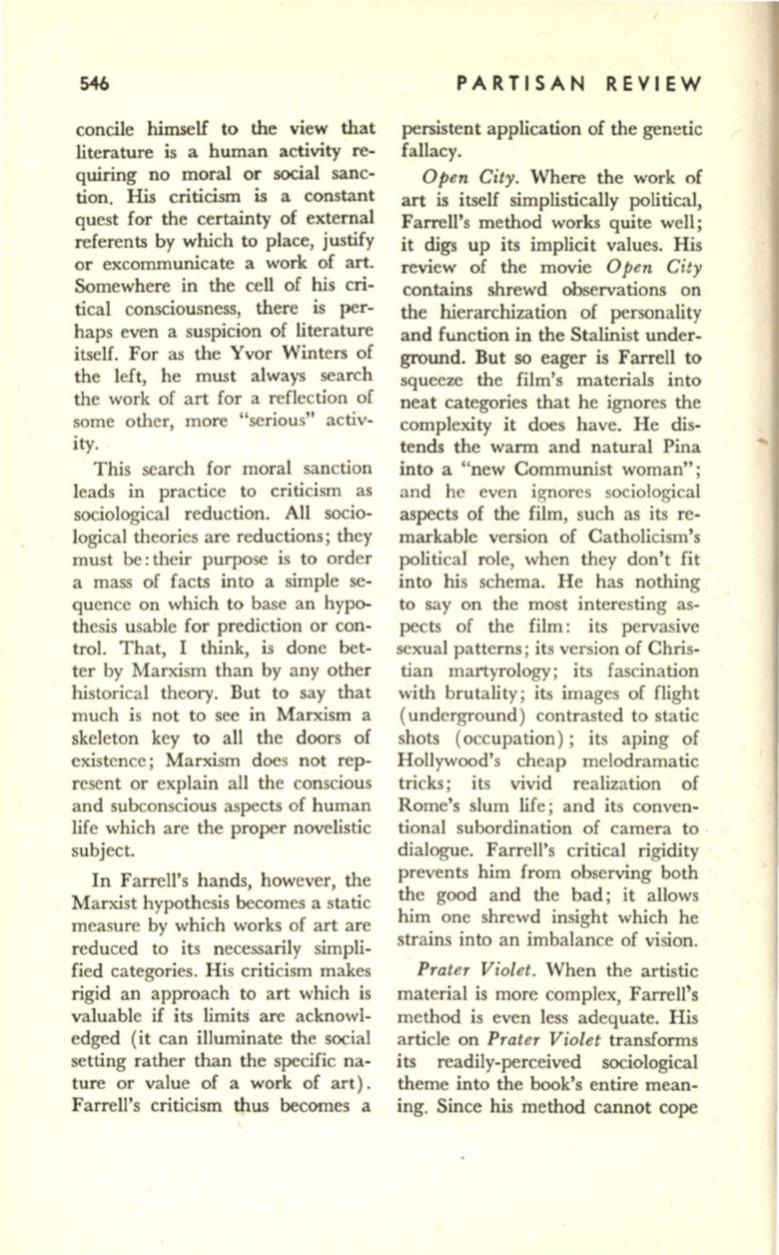
546
concile himself to the view that
literature is a human activity re–
quiring no moral or social sanc–
tion. His criticism is a constant
quest for the certainty of external
referents by which to place, justify
or excommunicate a work of art.
Somewhere in the cell of his cri–
tical consciousness, there is per–
haps even a suspicion of literature
itself. For as the Yvor Winters of
the left, he must always search
the work of art for a reflection of
some other, more "serious" activ–
ity.
This search for moral sanction
leads in practice to criticism as
sociological reduction. All socio–
logical theories are reductions; they
must be: their purpose is to order
a mass of facts into a simple se–
quence on which to base an hypo–
thesis usable for prediction or con–
trol. That, I think, is done bet–
ter by Marxism than by any other
historical theory. But to say that
much is not to see in Marxism a
skeleton key to all the doors of
existence; Marxism does not rep–
resent or explain all the conscious
and subconscious aspects of human
life which are the proper novelistic
subject.
In Farrell's hands, however, the
Marxist hypothesis becomes a static
measure by which works of art are
reduced to its necessarily simpli–
fied categories. His criticism makes
rigid an approach to art which is
valuable if its limitS are acknowl–
edged (it can illuminate the social
setting rather than the specific na–
ture or value of a work of art).
Farrell's criticism thus becomes a
PARTISAN REVIEW
persistent application of the genetic
fallacy.
Open
City.
Where the work of
art is itself simplistically political,
Farrell's method works quite well;
it digs up its implicit values. His
review of the movie
0 pen
City
contains shrewd observations on
the hierarchization of personality
and function in the Stalinist under–
ground.
But
so eager is Farrell to
squeeze the film's materials into
neat categories that he ignores the
complexity it does have. He dis–
tends the warm and natural Pina
into a "new Communist woman";
and he even ignores sociological
aspects of the film, such as its re–
markable version of Catholicism's
political role, when they don't fit
into his schema. He has nothing
to say on the most interesting as–
pects of the film: its pervasive
sexual patterns; its version of Chris–
tian martyrology; its fascination
with brutality; its images of flight
(underground) contrasted to static
shots (occupation) ; its aping of
Hollywood's cheap melodramatic
tricks; its vivid realization of
Rome's slum life; and its conven–
tional subordination of camera to .
dialogue. Farrell's critical rigidity
prevents him from observing both
the good and the bad; it allows
him one shrewd insight which he
strains into an imbalance of vision.
Prater Violet.
When the artistic
material is more complex, Farrell's
method is even less adequate. His
article on
Prater Violet
transforms
its readily-perceived sociological
theme into the book's entire mean–
ing. Since his method cannot cope


